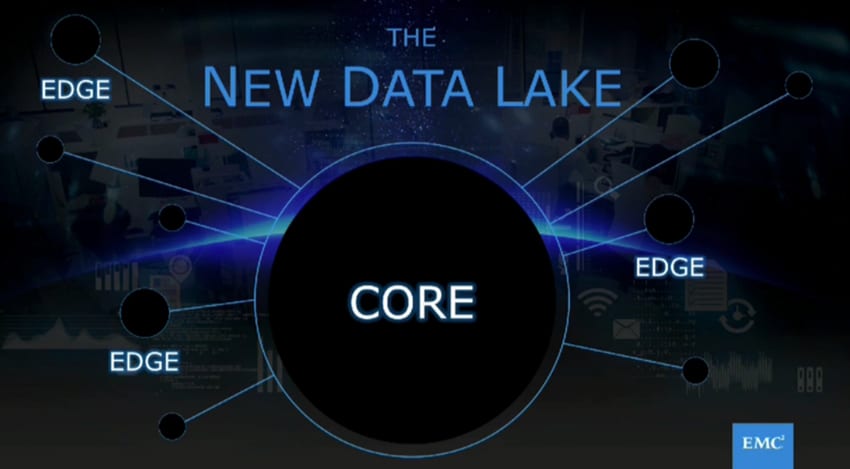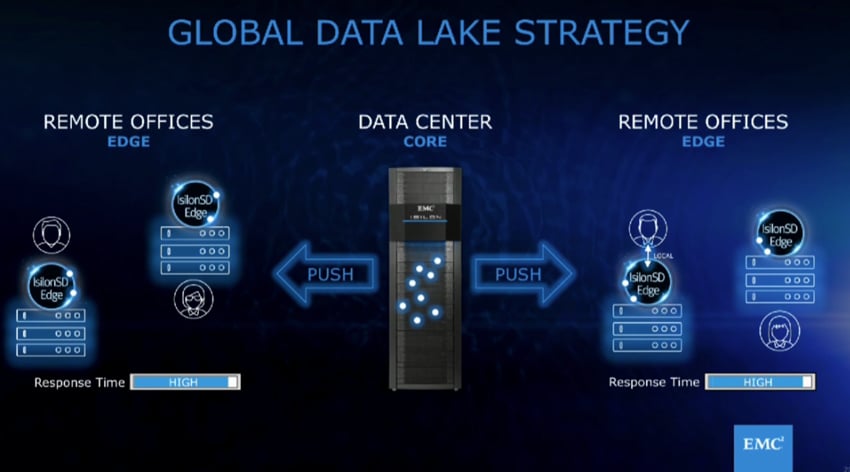Today EMC Corporation announced it was expanding its next generation Isilon scale-out NAS solutions to further power them to tackle unstructured data growth. These new solutions will deliver a Data Lake-ready platform to enterprises with high-speed data analytics. The new solutions are aimed at three aspects of the Data Lake, the edge, the core, and the cloud.
Today EMC Corporation announced it was expanding its next generation Isilon scale-out NAS solutions to further power them to tackle unstructured data growth. These new solutions will deliver a Data Lake-ready platform to enterprises with high-speed data analytics. The new solutions are aimed at three aspects of the Data Lake, the edge, the core, and the cloud.
Unstructured data is growing at a dramatic rate; IDC estimates it to grow to 40ZB by 2020. Collecting this data is only one of the problems facing organizations. Once the data is collected it must be managed and analyzed in order to gain any insights from it. One possible method (a method endorsed by EMC and EMC’s federation) is the use of a data lake or gathering massive amounts of data in a single pool (while others aren’t such fans of data lakes). Data lakes are designed to consolidate all of the growing unstructured data efficiently while allowing for analytics to help customer gain insights. EMC uses its Isilon scale-out storage for the Data Lake and Hadoop-based analytics for gaining insights.
EMC states that early adopters of Data Lakes are finding several use cases and are looking to extend these capabilities beyond a single storage pool. These early adopters are using EMC Isilon, which is one of the market leading NAS platforms for enterprises. Isilon is a “simple but powerful” NAS that manages and protects unstructured data from sources such as HD video, mobile transactions, and compliance-based archiving of medical images. EMC is introducing new additions to its Isilon family to make the Data Lake more efficient and secure while leveraging the cloud to tier less active data.
The three enhancements are:
- EMC IsilonSD Edge is a new, software-only version of EMC’s Isilon OneFS operating system. Operating at the edge, IsilonSD Edge is a 36TB capacity storage family that runs on commodity hardware and runs all key features of Isilon, including multiprotocol access, Swift, and HDFS. IsilonSD Edge is tightly integrated with VMware ESX and vCenter for simplified management and use with existing virtual infrastructures. This new product family brings software-defined capabilities to Isilon users for large-scale data, while allowing easy access to data at the edge.
- EMC Isilon OneFS.NEXT is all about the core; the enhanced Isilon operating system is designed to bring resiliency to the Data Lake, allowing for non-disruptive management and rollbacks. The OneFS.NEXT software is also designed to assure increased data availability with non-disruptive operations, upgrades and rollbacks. The bottom line is that users can’t be impacted by downtime—OneFS.NEXT enables resiliency at the core, and when coupled with IsilonSD Edge, customers reap the benefits of Isilon across every part of the data center. OneFS.NEXT also allows non-disruptive updates from minor to major and major to major. Along with this, there is now a rollback capability that allows admins to rollback the upgrade to the previous version if needed.
- EMC Isilon CloudPools enables the integration of Isilon scale-out NAS with private and public clouds. Providing a flexible choice of public cloud service providers such as Microsoft Azure and AWS, Isilon CloudPools offers organizations a simple and cost effective solution to leverage the cloud as a new “frozen data” storage tier, gaining cloud-scale storage capacity with data that is still visible and accessible should the business value change. This experience is completely seamless for the user and transparent for the application, and further reduces the cost of a Data Lake while retaining its functionality.
Availability
EMC Isilon SD Edge, OneFS.NEXT, and CloudPools are expected to be available in the first half of 2016.
Sign up for the StorageReview newsletter


